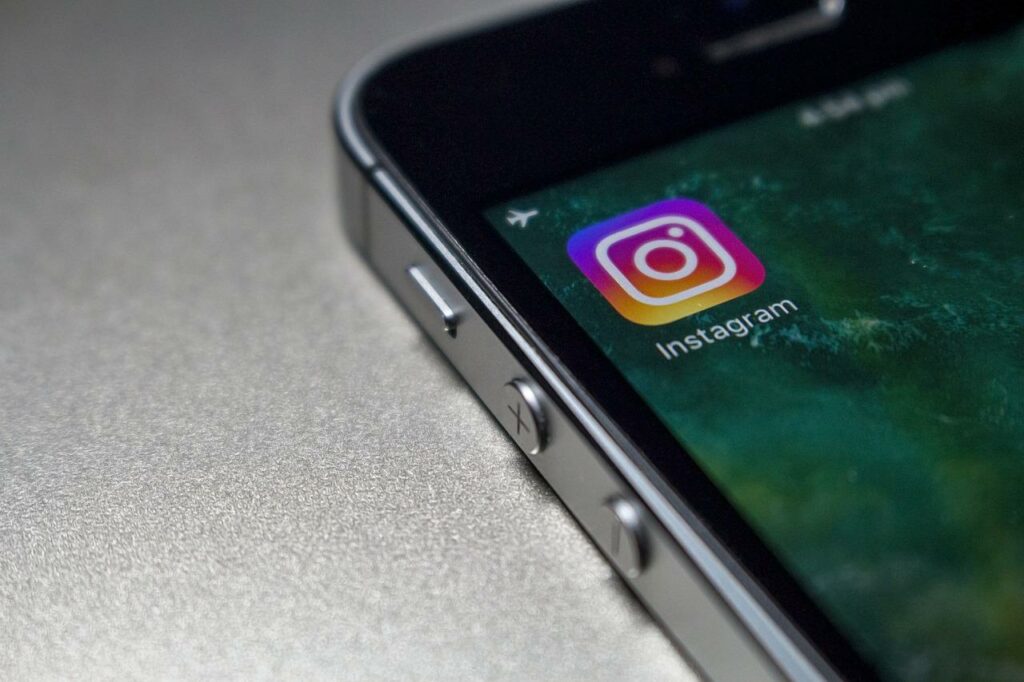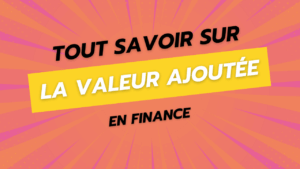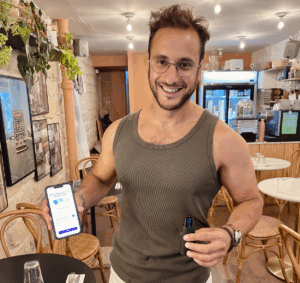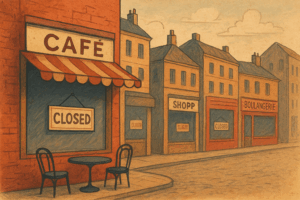And more broadly, how social networks have undermined certain restaurants, and boosted other brands.
A few years ago, we were mainly talking about the “dictatorship” of customer reviews on the Internet, with the advent of Tripadvisor in particular, and more recently Google reviews. The challenge for catering and hotel entrepreneurs and for traders in general was to encourage satisfied customers to submit a review, when the dissatisfied – it happens even to the best brands – did not hesitate to express their discontent in the public square.
This rise of the “queen rating” has had a number of positive effects, including a more competitive, more creative market and brands more focused on consumer expectations, in order to meet their expectations for a better overall rating. On the negative side, we found in particular the business of fake reviews, and the brands which had a lot of difficulty getting off the ground due to lack of first reviews.
Photo source illustrative image of the article.
Get a perfect score on the Internet
Before going further, and to fully understand how social networks have revolutionized food, we must first integrate the following notion: good grades, bad grades or mediocre grades do not necessarily reflect the quality of the food. plate of a restaurant. In fact, the number of reviews and the quality of them are a reflection of something much deeper, but poorly understood by some entrepreneurs (and me first at the beginning): perfect positioning.
The more your product, your offer, your service, is congruent with the target and understandable by it, the more good marks you will have, in quality and quantity, because you will respond to a demand and if you do it well, the Virtuous circle of good reviews on the Internet will be launched and nothing will be able to stop you.
Conversely, a brand poorly understood by the public, but offering excellent products, will have little positive customer feedback. Worse, if it tries to disrupt, it risks facing bad reviews, because customers did not want this product at that time, but they do not yet know that this product could be likely to please them. in the future.
Now that we understand that, let's see why the new social networks have reshuffled the cards and polarized the market.
Social networks for young people, with everything that goes with it
Not that we should sink into a caricature of an old fool, we must recognize that the new generations are much more “speedy” than the old ones, with their concentration in full decline. Experiment. Launch a “social” network like Tiktok, and you will have the impression of diving into a dystopian future made up of an avalanche of micro-advertising videos, humor based on short periods, micro-scenarios, and all this without so that you can get out. You will also notice that the sound is triggered automatically, and the videos follow one another without giving you time to catch your breath.
Furthermore, apart from a few exceptions, by democratizing access to creation for everyone, humor on these platforms has generally become barbarized, because it is limited by short times and is monopolized by budding videographers who have not yet acquired the maturity to create formats rich in cultural references. Irony, derision and corrosive humor are, for example, almost absent, going hand in hand with the growing puritanism of Western European societies, and the end of libertarian and satirical humor (decline of the Guignols de l'Info, de Grosland, des Inconnus, for much more "right-thinking" comedians focused on "behavioral humor", more than satirical humor). Please note, this is still a description, and NOT a review! Societies evolve, cycles respond to each other, and I do not express an opinion on this here.
On platforms like Tiktok or more generally since the arrival of the “real” format, this very short video format that people consume frantically, the audiovisual logorrhea is the exact opposite of what was done in the 20th century. Ask a young person on Tiktok to watch a 4-hour film like “Dances with Wolves”, not sure if they will hold up. Make him watch French films from the 80s full of social class critiques, satirical references and caustic humor, not sure he'll even crack a smile.
But what does this have to do with businesses and their communication on social networks? I'm coming.
New modes of communication, new offers
These new media are not only pushing brands to communicate differently, but they are actually pushing them to adapt their offering.
The fact that the public now consumes a series of visuals in short format, without any concentration, with loyalty close to zero, it is difficult to capture the prospect's attention, and to stand out from the crowd, some brands have adapted to these new modes of communication. And here are the characteristics that I was able to note:
- Extravagant offers
- Products based on vision
- Businesses based on short times (fashion effects)
- Comforting, not to mention childish, textures
- Additional and specific resources allocated to these new types of media (CM, videographers, etc.)
- Paid ambassador judges to defend the offer
Let’s break this down quickly…
Extravagant offers for impulsive consumption and fashion effects
If street food was initially positioned as a healthy alternative to fast food, the few barriers to entry (dark kitchens, premises available following the crisis, state aid) transformed it into real diversity. more or less qualitative cuisines, but above all completely freewheeling (which is not a bad thing, and once again, no one is there to judge but to describe well).
In other words, everyone launches their concept, their concept of concept, and their niche of niche of niche (not sure that there are enough customers for all that), but above all the war of communication means that each new entrant, more informed that the previous one, emphasizes the eccentricity of his offer.
So, before, we tried to create a product and an offer by making choices, for example:
- A restricted, duplicatable offer for unequal speed and greater customer absorption, with a hint of soft power (burgers)
- A quality offer at an affordable price (bistro)
- A low-end but high-calorie offering for small budgets (tacos)
- A street food offer for CSP+ (anti fast food)
- Etc…
With these new social networks, a new strategy based solely on “Instagrammability” and “Tiktokability” has emerged, with its share of very specific characteristics: gargantuan products, dripping ingredients, practicality of the product attenuated in favor of the visual, lower price therefore lowered quality also for the benefit of flavor enhancer.
The objective is to tell a story on a marketing level, and sell something very specific and imperatively visible and definable by an increasingly volatile audience.
I noticed two conditions for this type of business to last over time:
- The offer has long-term sustainability potential, and so much the better for the brand, these new media will simply have served as a springboard.
- The brand has enough resources to make this communication last for a long time, and will thus benefit from an almost infinite flow of customers who come to test this new, constantly fashionable institution.
As for brands that do not meet either of these two conditions, they will stock up for as long as it takes, undermining other brands that are much more scrupulous, and often less experienced in these new modes of consumption, before finally falling back...
In short, these social networks lead to:
- Fads, with short-lived businesses.
- A volatility of customers, who move from one fashionable place to another fashionable place.
- Prices are often driven down, even if it means cutting back on quality or sometimes on quantity (pretty ingredients mostly rich in starch and low in protein), for a large volume.
Extravagant and immersive places
One of the other characteristics of these new trends is the proliferation of points of sale, each more immersive than the other. The consumer wants to travel and not just on the plate, so architecture agencies are doubling their imagination to create places that are also “Instagrammable”, where we recreate a station, a street, a city or an entire country in a place to turn it into a sort of amusement park. Visible kitchen, neon lights, garlands, graffiti, everything is good to attract customers, even if it means sinking into an immersive parody copied from the neighbor, who himself copied from the other.
The risk of these soulless copy-pastes is that they risk quickly going out of fashion. Furthermore, we quickly sink into the caricature of authenticity. But very often, the illusion if done well is enough to persuade the customer that the place is a real authentic immersion, while the small restaurant next door, truly authentic, tries to survive.
Often biased judges
This part also concerns other types of products, such as household appliances, digital or whatever.
With the proliferation of guides, testers, foodies, neo-geeks and other independent drop shipping businesses and obscure online stores, and as social networks have turned into advertising windows displaying in turn an officially sponsored post, then a perniciously advertising, the consumer absolutely no longer knows where to turn.
The problem here lies in the impartiality of the press. If we knew that the traditional generalist press is now not reckless and often closer to the direction of the wind than to the truth, the “lifestyle” press has recently transformed into a real advertising showcase that does not speak its name.
So certainly, brands that have the means to pay for an article in a newspaper satisfy consumers who otherwise would not have known that this or that offer would meet their demand. But the line between advertising newspaper at 90% and real scout/investigator/columnist/thinker is now very blurred, thanks to the very good work of the press officers.
And if this concerns the major media, “Instagrammers” and “Tiktokers” are not left out. Behind the guides to the “best kebabs in Paris”, or behind the post of the “best Chinese restaurant that everyone is talking about”, there is often a financial arrangement that we need not shed light on.
However, here too, it is not a question of passing judgment: the guides have the right to do what they want with their editorial line, and in the end, it is the reader/consumer who judges, and so much so. better ! But this reminder only helps to sometimes explain the long queues in front of certain stores, when others which offer similar products are empty. But it is the harsh law of communication, and of the market.
Now that we have reminded that this is neither immoral nor prohibited, it would be great if in the future we created a guide – like the Michelin guide – totally independent, anonymous which would test accessible addresses, without overly promote it. A much more objective media, but unfortunately, the economic model would still have to be found (perhaps based on donations?).
Instagrammability at the expense of taste?
One of the other characteristics that I noticed is the following: the true taste of a product or recipe is now directly competing with its Instagrammability.
In other words, entrepreneurs now focus much more effort on making products that are visually attractive – or at least according to the new prevailing aesthetic standards – than good ones.
View this post on Instagram
A post shared by Brownstone Pancake Factory (@brownstone_pancake_factory)
This leads to a polarization into 3 main offers:
- Large consumer brands packed to the brim
- Well-made brands in commercial difficulty (for lack of being able to do this neo-communication)
- Premium brands reserved for a certain elite with a seasoned palate.
The growing diversity of the food offering risks taking a hit in the months or years to come, because by polarizing, it creates the wealth of certain fashionable brands, and kills all the others, which amounts to de facto to recreate the principle of large restaurant chains for example or large industrial bakeries to the detriment of small businesses.
The childishization of taste and textures
Finally, one of the things that I have seen is this new tendency to work on an offer or a product that infantilizes the consumer. No more bold, bitter, acidic or even just perfectly and deliberately neutral cuisines. Since Instagrammability is now king, we drive the point home with “tiktok-compatible” characteristics:
- Very soft or very crunchy textures
- Cream, syrup or other ingredients that are extremely comforting to the eyes and palate
- A visually exuberant amount of calories to impress, and fill the photo lens
- Here are some flavor enhancers you want: peanut sauce, sugar syrup, salt, chili pepper, glutamate. Everything that the primitive organism perceives as rare (on the reptilian level) is used to make it crack. It’s the pornorization of food.
To make the analogy, we are far from the popular cinema of the 80s/90s and much closer to the botched productions for holders of unlimited UGC cards. Here, the objective is to combine everything that is most addictive about food, in order to please the less seasoned palates, in a sort of compensatory overconsumption partly intended to be relayed in one's Instagram stories.
We thus transform the customer into an ambassador. How can you not post a photo of this gargantuan and indecent meal to impress your friends? And in terms of taste, there’s no risk taking. Exit bitter and acidic textures, natural aromatics and other low-selling vegetables, and make way for sweet, salty, “glutamated” tastes and ingredients rich in carbohydrates, for a minimum of material cost.
The death of strolling, the age of planning
Finally, I notice that this smartphoneization of the world fails to complete strolling, and it has killed the risk of making a mistake. With our phone, we now record the next places to test, and we go there religiously, in a group of “influenced” people, as if it were a pilgrimage, because we “heard about it on the Internet ". We no longer let ourselves be tempted by the coincidence of the stores, we first check what is said on this or that brand before setting foot there.
However, error is part of life, and without the risk of making a mistake, there is no worry when the time comes to make a choice. Without the fear of a bad choice, there is no adventure for the soul and the spirit.
And worse still, if the choice turns out to be bad, we blame the brand, and the whole world. The consumer becomes a child – we come back to this – inconsolable and complaining, who will not fail to leave a negative review on Tripadvisor: he is the consumer-king. I want therefore I am.
However, one of the characteristics of an adult is also the ability to cope with a bad experience, and the ability to put things into perspective. When you play, you sometimes lose, there's no point making a big deal about it!
But in this new world, the entrepreneur must understand that everything must be coherent and perfect, from the welcome to the way of presenting the offer, to the product or service that he will deliver. Therefore, well-placed businesses, based on strolling customers, should not rest on their laurels, except in certain very specific neighborhoods known to have good places (and walking in these neighborhoods is therefore planning and not by chance). Other brands, wherever they are, are stocking up because they are listed in the “spots not to be missed”.
Before, the consumer planned a Michelin-starred restaurant. Today he is able to reserve a hot dog. This is a complete paradigm shift.
Conclusions
Overall, these new modes of communication have greatly weakened certain brands, and strengthened others, which play with the following strategies:
- Aggressive offers on short notice
- Extravagant and appetizing ingredients, which respond to the reptilian instinct
- Comforting textures, and lots of taste enhancers (quick sugars, salt, complex carbohydrates, saturated fats, etc.) to make it even more addictive than the neighbor, with photographers specialized in taking well-crafted photos
- Instagrammable and completely crazy places, bordering on caricature
- Ambassadors generously thanked for promoting products
- Places calibrated to receive the public who have planned their arrival at specific times
If the diversification of the offer – particularly the catering offer – is undeniable, I notice with these new modes of communication a very strong polarization, which risks hurting many players, while others gorge themselves, and good for them.
So the idea was to summarize the thoughts I've had over the past few months while observing all these changes, humbly hoping that it could help certain actors, and if you have an opinion on the matter, don't hesitate to let me know. Share it in the comments!





